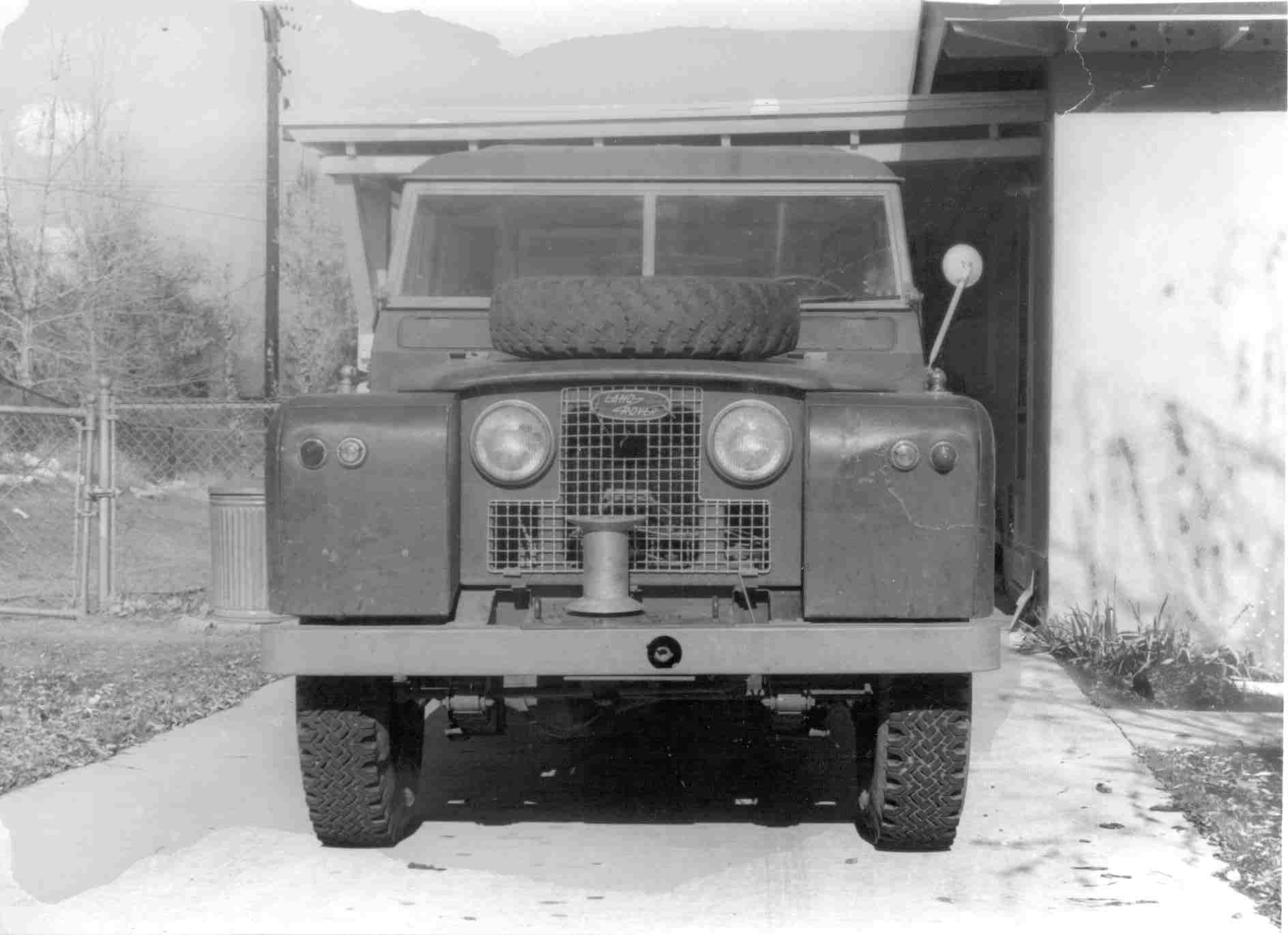Land Rover FAQ - Homemade winches
Series II - IIA vehicles originally

I was reading your article on Land Rover Capstan Winches This inspired me to write about my homemade capstan winch. I had a 1960 Series II, 109 Pickup that I purchased used in 1964 when I didn't have a clue what a Land Rover was. I quickly got into it, doing my own maintenance work and making up for the neglect of the previous owner. I was enamored of the canvas cover for the pickup bed and liked the idea of having a winch. The real things were out of my reach financially so I used my ingenuity to make substitutes. I found a scrapped barrel tilting mechanism that had a lovely worm gear set. I decided that this could be the makings of a capstan winch. I mounted two 1/4" steel plates above and below the bumper to make a mounting surfaces for two bearings and to enclose the gears. I had already modified the end of the crankshaft to make a double belt drive to run the 70 A Leece-Neville alternator I had fitted to replace the original generator. I further modified it to have a thick aluminum plate with three 3/8" dowel pins protruding. I made a dog clutch by welding a steel plate to the end of a slotted pipe. The slotted pipe fit over a shaft with a pin through it. A fork was installed to ride in a groove in the pipe so the clutch and shaft could turn after the clutch was engaged. There were two bearings and a couple of U-joints to get the winch drive shaft lined up with the crankshaft. One of the bearings was mounted on a welded assembly that was bolted to the engine. I used some tapped hole that apparently were there for the official version of the capstan winch. It was hard to get detailed dimensions for fabricating this part. Eventually I made it out of 1/4" steel plate that was held together with 8-32 screws so I could do a trail fit to the engine. Once I had an assembly that fit, I had a local shop weld the pieces. I just left the screws in place so no welding fixture was required. I also made a hand throttle linkage so I could control the engine speed from the front of the vehicle. I used it several times to free seriously stuck vehicles. I had a 100 ft coil of 1" manila rope. There was room on the capstan for about 6 turns of rope. The capstan was not tapered, but I had no trouble getting the rope to wind properly on the capstan without rope guides. There was a big tapered flange at the top and bottom of the 4" diameter center section. The weakest point was the somewhat sloppy fir of the sliding portion of the dog clutch. Eventually I replaced it with a piece made from a scrapped drive shaft. The spline gear mad a much better sliding joint and I was able to make holes in the flanged end to mate with the pins on the crankshaft. I had this vehicle until May 2000 when it was destroyed by a forest fire that overran my home. The fire was so hot that some of the aluminum body panels melted. The canvas top is another story. Basically I made a from electrical conduit bent by an electrician. I got a Sears cotton duck tarp, added grommets for fastening to the sides and covered the frame. I screwed the front edge to the cab and sealed it with Silastic silicon compound. I actually looked better than the official Rover canvas cover because I wet it and shrunk it in place to fit the frame. I made a tail gate with 1 X 2's, plexiglas sheet, masonite and two brackets from an old Jeep wagon. The hinges were home made. I started to replace the wooden tailgate with an aluminum framework, but never finished the project. I had a standing challenge that I would race anyone in the vehicle of their choice on the road of my choice. I now have a 1997 Defender 90. The challenge still stands.
I have attached a picture taken in 1967, which shows the winch. I had not yet added the hand throttle and I hadn't replaced the front trim plate, which I cut in two so it fit on each side of the winch. Visible behind the grill is the rectifier assembly for the big alternator.
Note: An email received from J. Potter of New Mexico, July. 2003.



















